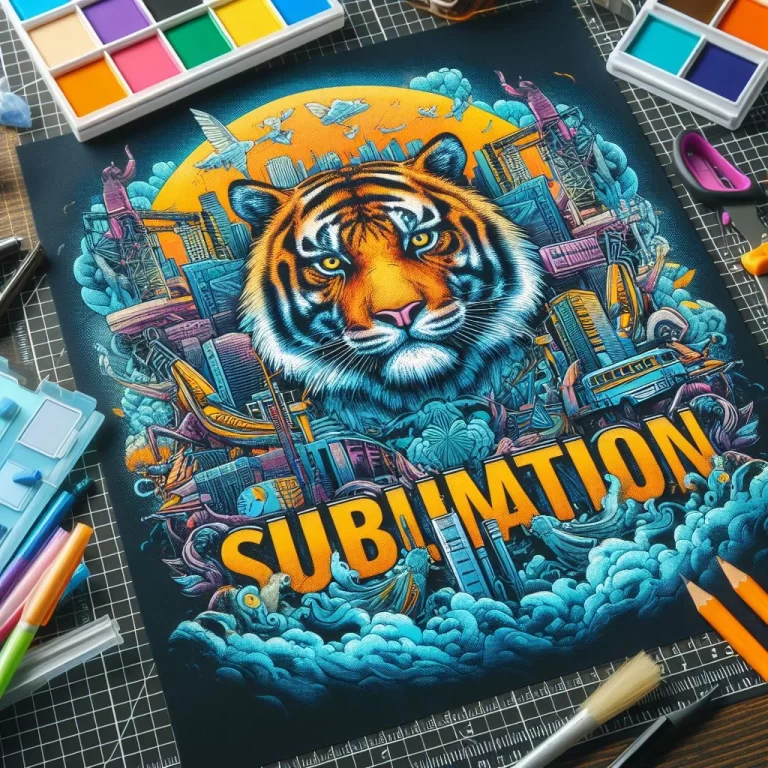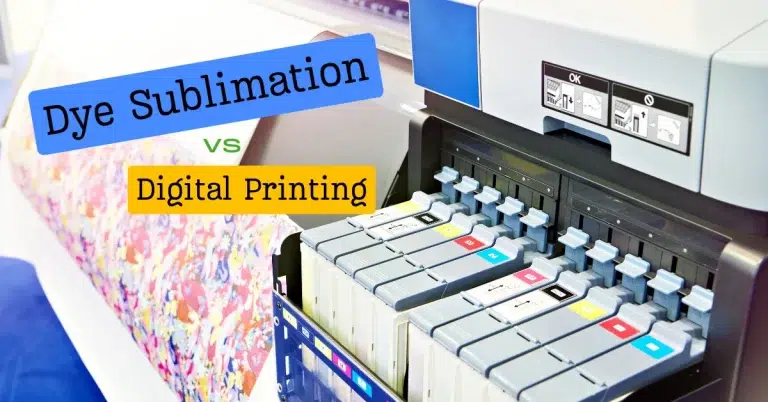Top 10 Sublimation Printing Mistakes (and How Pros Avoid Them)
Sublimation printing mistakes usually come from heat, pressure, moisture, or using the wrong materials. Colors may look faded, transfers can appear patchy, or images may not bond to shirts, mugs, or tumblers.
Checking your settings, using quality paper and ink, and keeping your press consistent helps prevent most problems and gives cleaner, brighter results.
Introduction
Sublimation can produce crisp colours and long-lasting prints, but even small mistakes lead to fading, ghosting, or transfers that simply do not stick. Many beginners think their printer, press, or blanks are faulty when the real issue is one of a few common problems that professionals already expect and know how to avoid.
This guide walks you through the top sublimation mistakes that waste shirts, mugs, and tumblers, and shows you how pros fix them fast. You will learn why these issues happen, how to spot them early, and the exact steps that prevent them so your prints turn out clean, bright, and consistent every time.
If your colors look dull or washed out, you can check our guide on why sublimation colors look dull and how to fix them to get brighter results.
Mistake 1: Using the Wrong Blank or Substrate
A faded or weak sublimation print often means the blank was not made for sublimation. If the surface cannot bond with the ink, the design will look dull no matter which paper or printer you use.

Check that every item is labeled sublimation-ready. Shirts should have at least 65 percent polyester, and mugs or tumblers must have a true poly coating. When in doubt, press a small test patch.
Professionals avoid this issue by sticking to trusted suppliers and keeping a list of blanks that always produce bright, clean results.
Mistake 2: Incorrect Image Quality or Design Setup
Low-resolution images or the wrong design settings can ruin a print before it ever reaches the heat press. Blurry graphics, pixelation, or backwards designs usually come from using images under 300 dpi or forgetting to mirror the artwork when needed.

Before printing, check three things: resolution at 300 dpi, correct print size, and whether the design must be mirrored. This quick check prevents most design-related mistakes.
Professionals keep a simple workflow: create at high resolution, preview the layout, then print a small proof when working with new artwork. This saves time and ensures the final transfer looks sharp and correctly aligned.
Mistake 3: Wrong Heat Press Settings for Time, Temperature, or Pressure
Most sublimation failures come from incorrect heat, time, or pressure. Too little heat leads to dull colours, while too much heat burns the coating or distorts the design. The wrong pressure can cause uneven transfers, faded spots, or blurriness.

A simple rule helps: always follow the recommended settings for the blank you’re using. Every substrate is different, so rely on the manufacturer’s guide rather than guessing. When switching to a new brand of shirts, mugs, or tumblers, run a small test to confirm the settings.
Professionals dial in their press by taking quick notes on what works, then repeating those exact settings for consistent results. This small habit prevents wasted materials and gives you predictable, high-quality prints.
Mistake 4: Paper or Ink Issues, Including Using the Wrong Side of the Paper
Sublimation paper has a print side and a back side, and using the wrong one leads to weak, uneven transfers. The print may look fine on paper but comes out faded or patchy after pressing. Low-quality ink or mixing regular ink with sublimation ink can cause the same problem.

A quick check helps: the print side is usually brighter, smoother, or lightly textured. If your paper has markings on the back, that makes it easy to confirm. Always use true sublimation ink and make sure your printer hasn’t run low or mixed ink types.
Professionals avoid this mistake by loading paper carefully, sticking to reliable ink brands, and doing a quick nozzle check before big jobs. This keeps colours consistent and prevents wasted prints.
To reduce moisture-related problems, you can follow this guide on sublimation paper settings for cleaner prints.
Mistake 5: Not Preparing the Substrate Properly
Moisture, lint, and wrinkles can ruin a sublimation transfer even when everything else is correct. Moisture creates small faded spots, lint leaves tiny blue dots, and wrinkles cause uneven pressure on the press.

A quick prep routine makes a big difference. Lint roll shirts, pre-press to remove moisture, and smooth out seams or folds before placing your design. For hard blanks like mugs or tumblers, wipe the surface and make sure it’s clean and dry.
Professionals treat prep as a non-negotiable step because it prevents the tiny flaws that show up only after pressing.
Before choosing shirts or blanks, it helps to review this polyester sublimation guide so you know which fabrics give the best color.
Mistake 6: Movement During Transfer Causing Ghosting
Ghosting happens when the paper shifts even slightly during pressing or when you lift the press too quickly. This movement creates a blurry shadow around the design, which cannot be corrected once pressed.

To prevent it, secure the paper firmly with heat-resistant tape and make sure the design is completely flat against the surface. Avoid auto-open presses for sublimation because the sudden lift can cause the paper to jump. Let the item cool for a moment before moving it.
Professionals focus on stable setup, tight taping, and controlled lifting to keep lines crisp and colours clean.
Mistake 7: Incorrect Coating or Finish on the Material
If a blank has the wrong coating or a protective film still attached, the ink will not bond correctly. This leads to faded spots, strange color shifts, or areas where the print simply will not transfer. Overheating can also burn the coating, causing yellow or brown marks.

Before pressing, check that the blank is truly coated for sublimation and remove any clear film or plastic layer. For items like tumblers or metal panels, inspect the surface for scratches or uneven coating since these flaws will show in the final print.
Professionals test new brands of blanks and avoid unpredictable coatings, which helps ensure every transfer comes out smooth and vibrant.
Mistake 8: Printer Maintenance and Colour Management Problems
When a sublimation printer is not maintained, it can produce banding, streaks, or faded colours even with fresh ink. Clogged nozzles, dried ink, and incorrect colour profiles are common causes of dull or uneven prints. These issues often appear suddenly after periods of not using the printer.

A simple routine helps prevent this. Print a small colour test once or twice a week, run a nozzle check before big projects, and use the correct ICC profile for your ink and paper. This keeps colours accurate and prevents wasted transfers.
Professionals rely on regular maintenance because it keeps their prints sharp, predictable, and consistent across every job.
Mistake 9: Using the Wrong Tape or Poor Wrapping on Mugs and Tumblers
Sublimation tape and wraps play a big role in getting clean transfers on curved surfaces. Using low-quality tape or applying it loosely can leave marks, gaps, or uneven pressure. This often shows up as faded seams, blurry edges, or designs that don’t wrap smoothly around the mug or tumbler.

To avoid this, use true heat-resistant sublimation tape and apply it firmly without stretching it. For full wraps, make sure the design is tight against the surface with no air pockets. Check alignment before heating, since even small shifts can show in the final result.
Professionals take a minute to tape and wrap correctly because it guarantees consistent pressure and a clean, continuous design.
When experimenting with new surfaces, you can learn more about sublimation on glass and how to get a clean transfer.
Mistake 10: Relying on Default Settings Without Testing
Default printer or press settings rarely match the exact needs of your blanks, ink, or paper. When you rely on presets, you risk under-heating, over-pressing, or getting colours that do not match your design. These small mismatches lead to faded areas, colour shifts, or inconsistent results from one project to the next.

A quick test press is the best fix. Before making a full shirt, mug, or tumbler, run a small sample using the recommended settings for that specific blank. Adjust time, temperature, or pressure if the colours look dull or the transfer is incomplete.
Professionals treat testing as part of their process because it saves materials, reduces mistakes, and ensures every final product looks polished.
If you’re unsure which products work best, this list of sublimation blanks and substrates covers the most reliable options.
Pro Workflow to Avoid All Sublimation Mistakes
Sublimation works best when you follow a simple, consistent workflow. Most mistakes come from small steps being missed, not from bad equipment. A quick routine helps you spot issues early and avoid wasted shirts, mugs, or tumblers.
Here is a fast-reference checklist:
Common mistake and quick fix table
- Wrong blank: Confirm polyester content or poly coating
- Low image quality: Use 300 dpi and correct sizing
- Bad heat settings: Follow the blank’s instructions, test first
- Paper/ink issues: Print on the right side, use sublimation ink
- Poor prep: Lint roll, pre-press shirts, clean hard blanks
- Movement/ghosting: Tape firmly and lift slowly
- Coating problems: Check for films, inspect surfaces
- Printer problems: Weekly prints, nozzle checks, correct ICC
- Bad wrapping: Tight wraps, proper tape
- Default settings: Always test before a full press
A professional workflow is simple: prepare your blank, check your artwork, print a test, press a sample, adjust if needed, then press the final product. When you follow this pattern each time, your results become predictable and your colours stay bright from one project to the next.
Heat Press and Transfer Settings
Correct heat press settings make the biggest difference in how your sublimation prints turn out. Small changes in time, temperature, or pressure can affect colour, clarity, and how well the ink bonds to the material.
When troubleshooting time or temperature, this complete sublimation temperature guide explains the right settings for every blank.
Temperature and time
If the heat is too low, colours look dull or faded. Too much heat can scorch the coating or blur the design. Always follow the recommended settings for the blank you’re using and run a quick test if you switch brands.
Pressure
Both high and low pressure can cause issues. High pressure may blur the print, while low pressure leaves areas that look under-pressed. Adjust the press so the transfer feels evenly snug without forcing it.
Moisture control
Moisture creates uneven colours and small splotchy marks. Pre-pressing the blank for about ten seconds removes trapped moisture and helps the transfer lay flat.
Preventing ghosting
Ghosting happens when the paper moves as the press opens. Secure the transfer with heat-resistant tape and lift the press slowly to keep the design sharp.
How to Remove Sublimation Ink From a Tumbler and Resublimate
Removing sublimation ink from a tumbler is possible in some cases, depending on the coating and how deeply the ink bonded. While you can’t fully erase the print, you can lighten it enough to re-wrap and press a new design over it.

How to remove or reduce the existing print:
- Heat the tumbler in a convection oven or tumbler press to soften the ink
- While warm, scrub gently with a non-abrasive sponge to lift as much colour as possible
- Clean the surface with rubbing alcohol to remove residue
- Let the tumbler cool completely before rewrapping
How to resublimate:
- Apply a full-wrap design that covers the previous print
- Tape tightly to avoid ghosting
- Use recommended time and temperature for that tumbler’s coating
- Press once and allow to cool slowly for the cleanest finish
This method works best with darker, full-coverage designs that can hide the original image.
How to Fix Sublimation Mistakes
Fixing sublimation mistakes depends on the type of mistake and the surface you’re working with. Some issues can be corrected, while others can only be covered or repurposed.
Common fixes:
- Faded colours: Increase heat, time, or pressure slightly and press a new blank; faded prints cannot be re-pressed
- Ghosting: Not fixable, but preventable with firm taping and slow lifting
- Moisture spots: Pre-press shirts for ten seconds and store paper in a dry area
- Banding: Run a nozzle check and clean the print head
- Misalignment: Reprint and reposition; misaligned designs cannot be corrected on the item
- Small flaws on shirts: Add patch-style designs, pockets, or layered graphics to cover imperfections
- Errors on tumblers or mugs: Use a full-wrap design to cover the old one or repurpose the item for test prints
Most sublimation mistakes can’t be erased, but they can often be hidden, corrected in workflow, or prevented on the next print.





